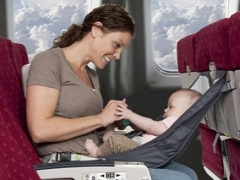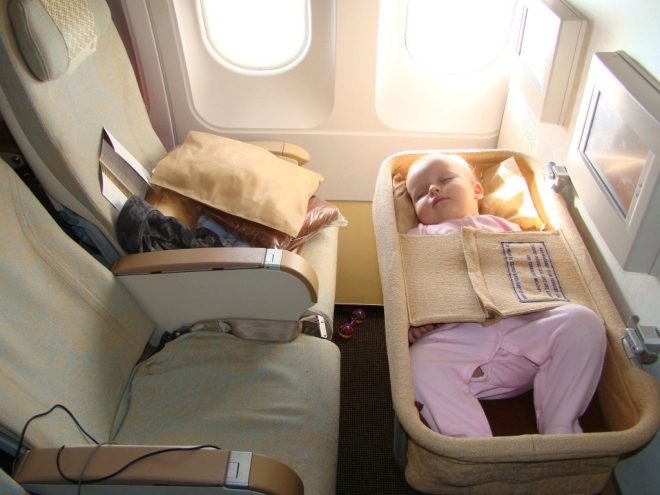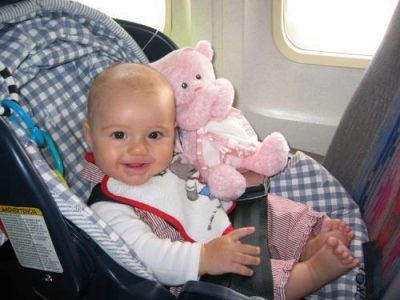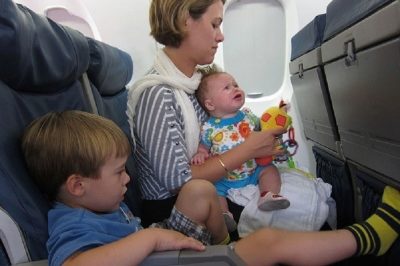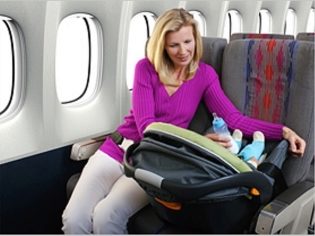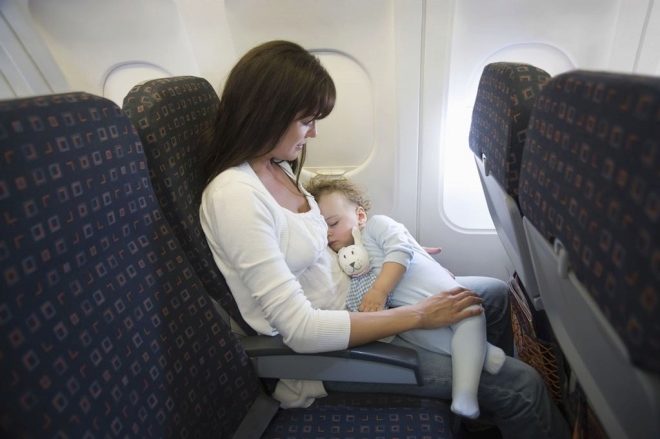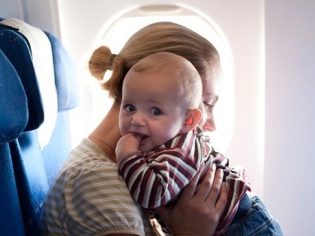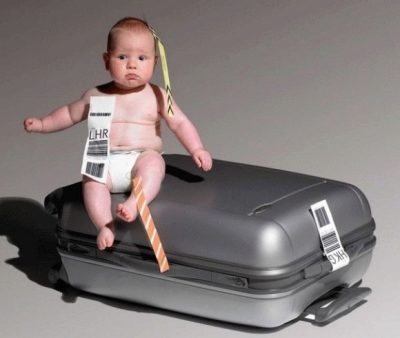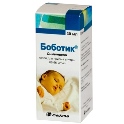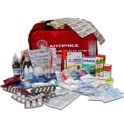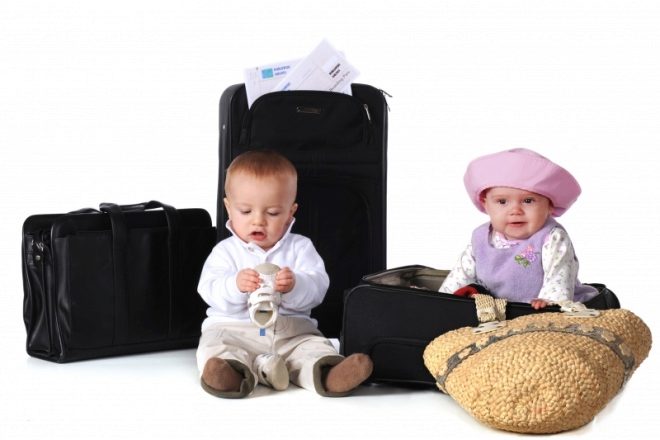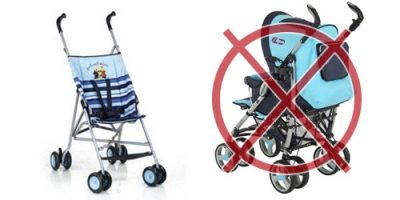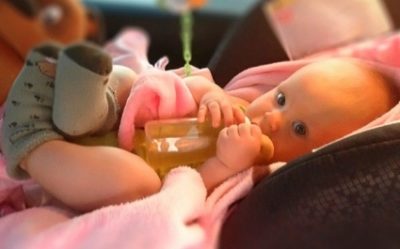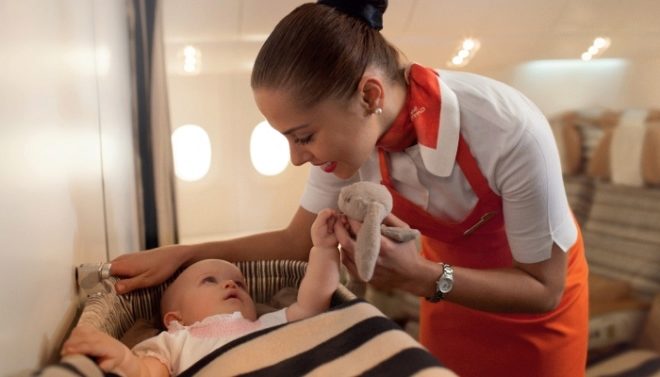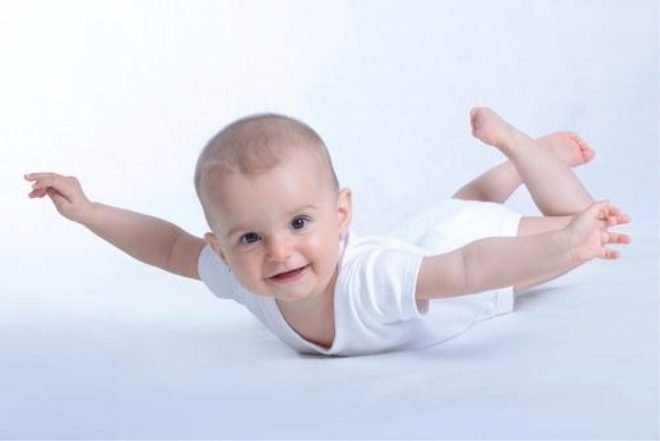Flight with baby on the plane
A young mother is also a man, and she wants to go on vacation, recover from childbirth, change the situation. Many parents try to take an infant with them. Today, a couple traveling with a newborn won't surprise anyone. And if there is a flight by plane, then restless mothers start beating all the bells, frantically searching for answers to many questions concerning the compatibility of the child and air transport. How to prepare your child for a long flight, how to help him on the way and minimize all possible risks, we will tell in this article.
Is the flight harmful?
No one has yet succeeded in reliably proving and substantiating the terrible harm of flying an airplane for infants. Even those who are categorically against such travel for crumbs, cannot intelligibly interpret their position.
Pediatricians for the most part do not see anything wrong with such a trip, provided that the infant is healthy, he has no heart disease, and severe brain and neurological pathologies.
However, in defense of the position of opponents of flights for infants, I can remind you that many airlines, including leading Russian carriers, ask parents who are going to travel on board their vessel with a baby, a receipt that they will have no complaints about the airline, if the baby suddenly becomes ill during the flight.
They do this solely in order to protect themselves legally. But parents need to remember that the child will not have problems if they, adults, do everything right: they prepare the baby, help him at every stage of the air trip.
And now 9 rules of a successful flight with a baby by the experience of moms
How old can you fly?
The age at which a child can travel by air without any problems is a cause for heated debates between mothers, doctors, and a wide variety of specialists. According to Dr. Komarovsky, almost all kids tolerate flights very well. The only limitation, according to the doctor, is the children of the first week of life. Seven or eight days after birth, it is better to spend on the ground, since at such an early age the crumbs already experience serious difficulties in adapting to the world around them. Care should be taken in the flight of children under the age of 2 weeks.
Thus, Yevgeny Komarovsky emphasizes that starting from the eighth day of life, the child is quite able to fly in an airplane with his parents. Mom and dad, however, need to try and create the most secure conditions for the preservation of the health of the crumbs. We will tell about them below.
And now we will listen to Dr. Komarovsky about air travel with children.
Babies up to 6 months are generally ideal companions from the point of view of other liner passengers. They sleep almost all the way and do not bother anyone. This, alas, cannot be said about children older than a year, and especially about three-year-olds who do not sit in their place, and one should definitely run around the cabin, look in the windows and loudly comment on what they see.
Preparing for the flight
How a baby takes a flight depends largely on how parents prepare it for this adventure. Immunity of the newborn is still being formed, it is difficult for him to perceive cardinal changes, and therefore additional stress factors for him need to be eliminated. So, the last vaccination should be made to the baby 3 weeks before departure.So it will be possible to reduce the immune load.
Rest with a small child is better not to plan in the winter, when it is snowing and frosty in your home region. With a sharp hit in a hot climate and a different time zone in an infant baby, the process acclimatization will flow much harder and longer.
Rest is normal, not running with the breast crumbs to the doctors, it will turn out only if the climate change is fairly smooth - the climate of the country you are flying to will be at least a little like the usual baby.
Children who do not have acclimatization do not exist in nature. In varying degrees, it manifests itself in all - fever, intestinal disorders, sleep disturbance, emotional sphere, and so on. Moreover, an infant tolerates this physiological "reconfiguration" of the body much harder than older children. The average duration of this process in children up to a year is about three weeks.
And now a small video specialist on the acclimatization of infants
However, it is not necessary to listen to the advice of "experienced" from the Internet, because for each child acclimatization proceeds entirely individually.
It is harmful not to fly on an airplane, and not to know the rules and safety measures that will help a child overcome a path without compromising health:
- Do not change the climate too dramatically. It is not necessary to fly from frosty Siberia with the baby to hot India in the midst of the New Year holidays.
- Prepare your baby to change time zones in advance. A month before the trip, try to lay it every day 15 minutes earlier or later (it all depends on which way the time shift is expected). So, the child will gradually enter the daily regimen, which will be observed, being in a new time zone.
- Do not take vaccines immediately before departure.
- Visit the pediatrician a day before the trip, he must confirm to you that the child is healthy and ready to fly.
Documents
On the baby that they take with them aircraft, be sure to take the original birth certificate. The child himself must be entered in the mom or dad's international passport. If parents have passports of a new sample (biometric), then there is no possibility to enter a child in them. You need to get a separate foreign passport for the baby.
In countries with a visa regime, the baby will need a visa on an equal basis with adults, most embassies do not charge for her infant.
If the child flies with his grandmother or another relative, a notarized and certified consent for such a trip will be required from parents, in addition to a receipt in the absence of claims to the airline in case of deterioration of the condition in the air. It must contain the data of the accompanying person, the purpose of the trip and the terms of the trip. It is also desirable to describe the authority of the maintainer, what actions he can take, what decisions lie within his competence.
For a child, even an infant, it is necessary to acquire travel documents. For babies from birth to 2 years of age, international air fares mean a separate Infant fare. By purchasing such a ticket, you do not buy a separate seat for the baby in the cabin, it will fly on an adult's lap. Cost - about 10% of the price of an adult ticket for the flight, in some companies - for free. This travel document allows you to carry one pram for free.
What to take in hand luggage?
The flight rules for children do not prohibit taking a bottle with a nipple, baby food with them in hand luggage. The stewardess is always at the request of the mother to warm it up for the baby during the flight. For a child, you need to take drinking water, since dry air in the cabin of an aircraft can adversely affect the state of the mucous membranes of the respiratory organs of the crumbs. Usually, it is prohibited to carry liquid on board an aircraft, but the ban does not apply to baby food. You can safely take a few bottles of 300 grams.
Carefully read the list of prohibited items (on the website of the airline that you are lucky, it is mandatory). This will help to choose the right funds in the travel kit. Usually for babies they take a couple of diapers, vasoconstrictor drops in the nose "Nazivin Sensitive" or "Nazol Baby"Remedies for colic"Espumizan" or "Bobotik».
Other medicines take, only if there is a recommendation of the doctor. If you are transporting a drug that is prohibited for free exportation, take a prescription and a doctor's appointment with you, which will indicate the reason why the little patient needs this medicine.
Take in hand luggage one set of changeable clothes for infants, in case it gets too full or spit up.
What to put in the luggage compartment?
All the rest. Suitcases, clothes, etc. A travel stroller should not be a large-sized transformer, use the compact “book” or “cane”. At the airport you can walk with a stroller, but when boarding a plane, it must be given to flight attendants. Children's transport will temporarily go to the luggage compartment. Do not forget to clarify where to look for your stroller - sometimes it is left on the tape with other luggage or moved to a rack with an oversized load.
No one forces you to keep the whole flight in your hands, it can be quite difficult. Some airlines provide a special cradle for the baby, which can be easily attached to the back of the chair in front. The representatives of the airline should declare that you need it on the way, at least one day before departure (by phone).
In the luggage must pass baby car seat, if you decide to take it with you.
Main steps
-
In the airport. During registration, it is known to all adults, sometimes it takes a lot of time. In order not to harass a small child with a long wait in the queue, try to ask you to arrange a baby with another counter, for example, where business class customers are registered. There are usually no queues. Very often, airline employees willingly take a step towards mothers with babies.
-
On the plane for takeoff. Once you have taken your place, try to make your baby more comfortable. Infants do not wear seat belts, for them there are special fasteners that are attached to the belt fastened on the mother. You can get such a device by asking a stewardess.
The most unpleasant moments in flight are themselves. take off and landing. Because of the pressure drop lays his ears. Adults gape and (they swallow saliva to relieve their condition. Breast babies also experience discomfort, but they cannot tell you exactly what to do to get better. Therefore, the baby should be given a pacifier or a bottle of drink.
-
In flight. With infants rarely have problems in flight, as they are quite self-sufficient, combining snacks with a strong healthy infant sleep. If the baby still burst into tears, ask the stewards for permission to walk along the aisle and shake it. This is usually permissible if the aircraft is not in the zone of turbulence and there are no other restrictions on the part of the crew.
-
Byafter landing. At this stage, you again have to go through the control at the airport, get your luggage. To speed up the process, ask for help from your destination airport staff (this is where school and extracurricular English lessons will be useful!). Often moms with babies miss the queue. In addition, the employee will certainly tell you where the mother and child room is, so that you can carry out the necessary hygienic procedures for the baby after the flight - for example, changing the diaper.
Tips of Dr. Komarovsky
The well-known pediatrician and TV presenter, who often has to tell parents how to travel with babies in an airplane, says that parents need to remember a few key nuances that will help the crumbs to get through the air journey well.
Sucking movements ease the state of ear congestion during takeoff and landing, and swallowing movements significantly reduce the likelihood of occlusion of the auditory tube. Komarovsky’s nipple or breast, suggested at these stages of the flight, reduces the risk of otitis, especially if there is ARVI. Although the doctor does not recommend flying at all with infections.
If a child has a nose, and in infants it happens quite often due to the narrowness of the nasal passages, this may complicate his condition. That is why it makes sense to take vasoconstrictor drops with you. They should be instilled half an hour before take-off after pre-instillation of saline in the nose. Before planting should also drip vasoconstrictor drops.
To prevent the mucous membranes of the child’s respiratory tract from drying out in low humidity conditions in the cabin, Komarovsky recommends irrigating the nasal passages with special sprays on the basis of saline during a long flight. They can be bought at any pharmacy.
Useful recommendations
- When planning a route, try to create it without transfers. If this is not possible, try to choose such flights so that the waiting time at transit airports does not exceed 4 hours.
- Feel free to find out at each airport, where you will be, the whereabouts of the mother and child rooms. There you can wash your baby, put it to bed, feed and change clothes comfortably.
- Keep calm. A child, even a very small one, is more easily experiencing a flight than his parents are worried about this. Do not forget about the strong emotional connection between mother and baby. Calm mom - a pledge of peace crumbs.
